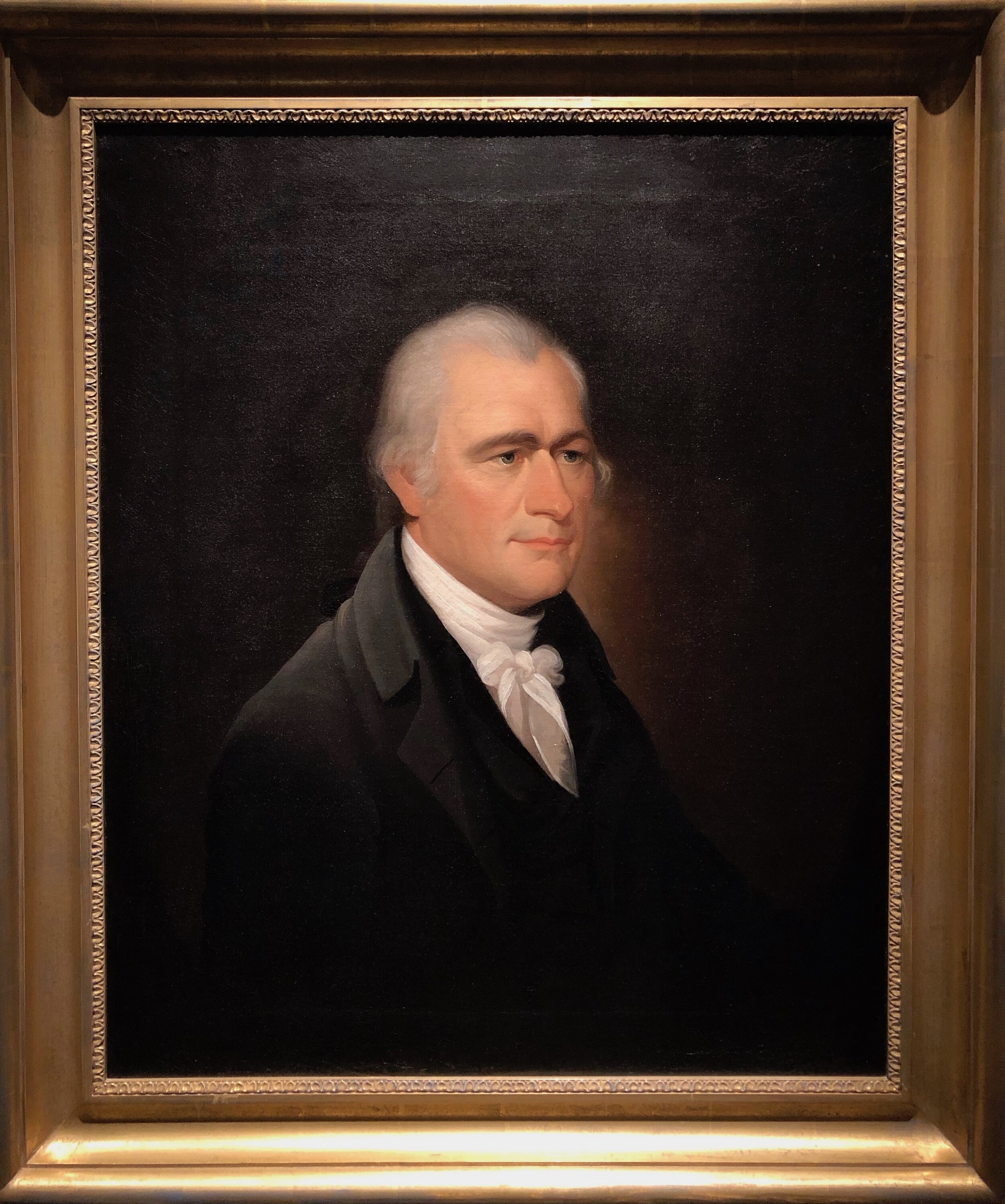Alexander Hamilton was an important man in his time, and he sat for portraits by the most famous American artists of the same era. Some of these paintings were commissioned to reinforce his public persona, and were hung in public buildings as a tribute to his role as the country’s first Secretary of the Treasury, Others were more intimate, and intended for family and friends. Nearly all of these portraits date from the 1780s and 1790s and show Alexander in his prime, his chin raised and his gaze determined, ready to take on whatever challenges the new country threw his way.
But the portrait here is different. By 1802, when it was painted, much had changed in Alexander’s life. He had withdrawn from the government and returned to New York City to concentrate on his family and his law career. The political world that had been so much a part of his life had continued on without him, and as the power of the Federalists, his political party, had begun to fade, his influence had dwindled with it. His friend and mentor George Washington had recently died, leaving him without the wise counsel that the older man had long provided.
But a far greater tragedy darkened Alexander’s life. In November, 1801, his nineteen-year-old son Philip had challenged another young man, George Eacker, to a duel after a squabble in a playhouse. The oldest Hamilton child (and arguably his parents’ favorite), Philip had recently graduated with honors from Columbia College, and had begun reading the law to follow in his father’s footsteps. Before the duel, Alexander advised Philip to fulfill the honorable obligations of the challenge by firing away from his opponent and intentionally not harming him. This Philip had done, while Eacker, with no such compunction, had aimed his fatal shot directly at Philip. Mortally wounded, Philip died the following day in the arms of his parents.
Alexander was inconsolable, not only grieving over the untimely death of his son, but also blaming himself. At Philip’s funeral, he was so distraught that friends needed to support him physically at the grave. Acquaintances who saw Alexander in the weeks and months that followed were shocked by how changed he had become.
The portrait, above, seems proof of that. Despite the familiar hint of smile, Alexander looks weary and burdened with melancholy, and much older than a man in his forties. His gaze is now turned inward, its keenness dulled. Gone are the bright coats he once favored, and instead he is dressed in solemn black that is likely still mourning for Philip. Gone, too, are the trappings of his former power - the costly furnishings of an elegantly appointed office - that appear as the backdrop in earlier portraits. Instead he is shown against a simple dark background that places the entire focus of the painting on his face, and his sadness as well. He’s far removed from the energetic Secretary of the Treasury from a decade before - and also far removed from the heroically handsome Hamilton that now appears on the ten-dollar-bill.
Painted by Albany artist Ezra Ames (1768-1836), this portrait was said to have been a favorite of Eliza Hamilton, who considered it an excellent likeness. Doubtless, too, the sorrow in it reflected her own grief and loss. How could she have known that in 1804, she’d be mourning the loss of her husband in a duel as well?
This portrait (coped by the artist after his own original) is included in the "Schuyler Sisters & Their Circle" exhibition at the Albany Institute of History & Art in Albany, NY., on display through December 29, 2019. I’ve seen reproductions of it many times, but in person the beauty and the sadness of it is heartbreaking. I have to agree with Eliza: it’s now one of my favorites, too.
"Alexander Hamilton" by Ezra Ames, c1810 (copy after an 1802 original), Permanent Collection, Union College. Photograph copyright 2019 Susan Holloway Scott.
Read more about Alexander and Elizabeth Schuyler Hamilton in my historical novel I, Eliza Hamilton; order here. My latest historical novel, The Secret Wife of Aaron Burr, is now available everywhere. Order here.

